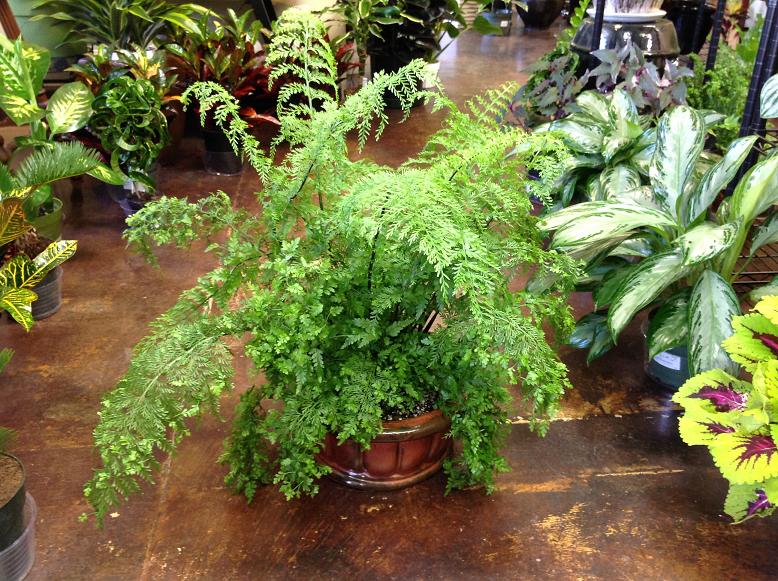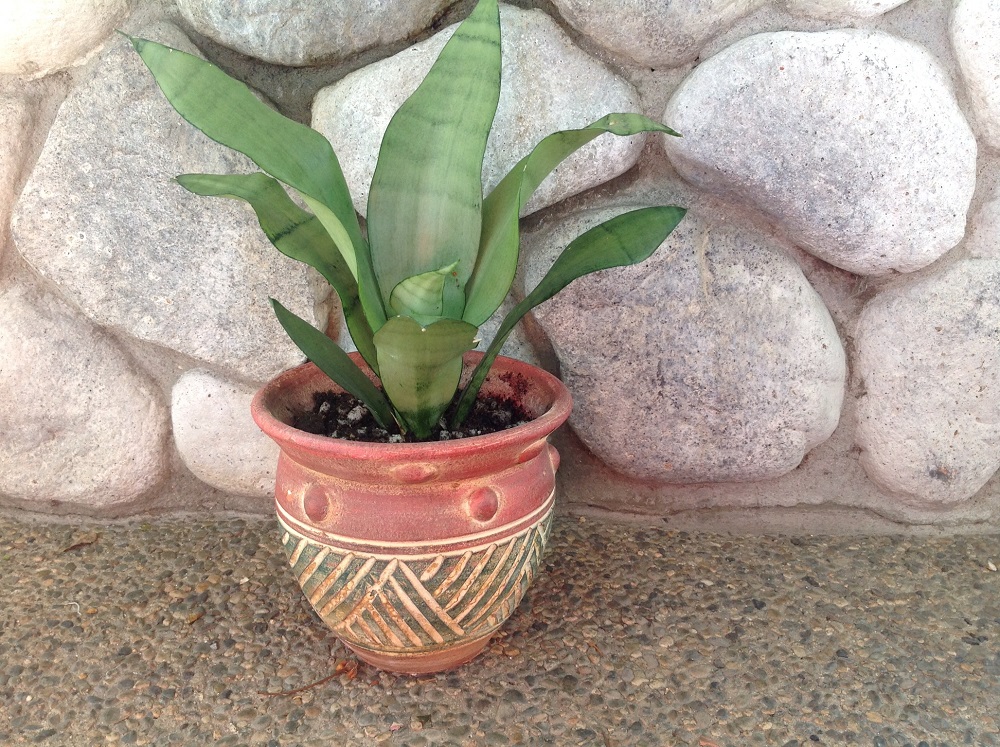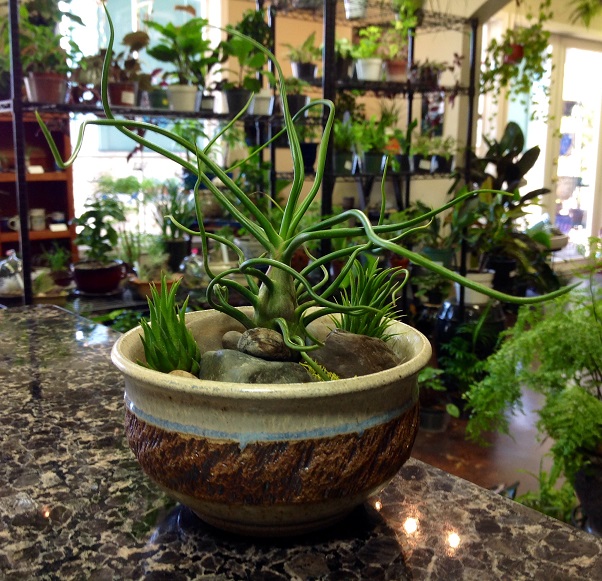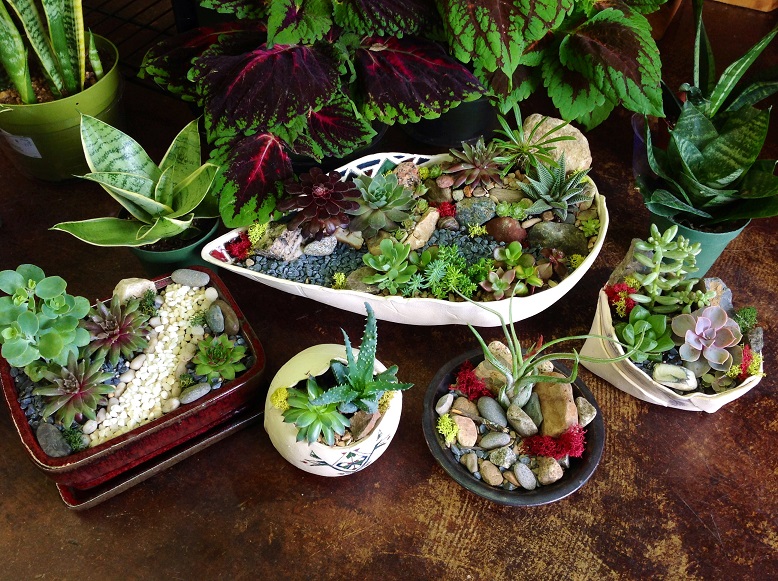I remember when I brought my first Maiden Hair Fern. You know, the ones with the delicate, tiny, vibrantly green, feather like leaves with dark thin stems.
You don’t see them too often in stores that sell house plants these days and I think it’s because they’ve gotten a bad name for being extremely fragile. I know that was what I thought as I watched all the leaves slowly brown and fall off once it got hot and we had to start using the air conditioner.
I’ve noticed. How many people come into my shop and swoon over the varieties of ferns I have only to say with a sad look, “I love ferns, but they don’t love me.”
Ferns, like many other plants, require a high level of humidity, which is moisture in the air, in order to stay green and lovely. Often times they can make it through the winter and spring time without supplemental humidity in our area as long as we keep them a safe distance from a wood stove and don’t use too much central heating, but even so, that is just the case at my house and in my shop….and I have a lot of plants. The more plants you have in one area, the more they help support each other by creating humidity.
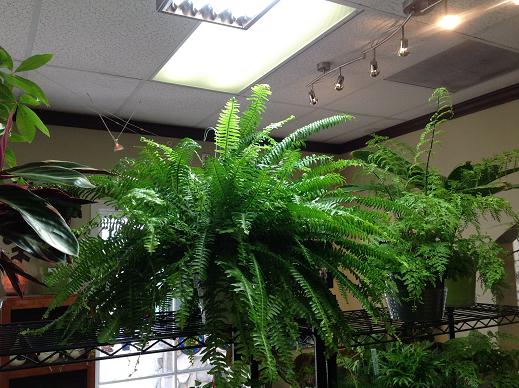
The signs of a plant suffering from low humidity are curling, brown, crunchy tips of leaves and sometimes long strips of light brown that’s formed along the length of the leaves. If a plant is suffering from low humidity that does not mean you need to water it more. In that case you are only adding insult to injury by making a weak plant weaker if you start to overwater it. I think that has happened to a lot of us when we don’t realize exactly what we are looking at when our plant is unhappy.
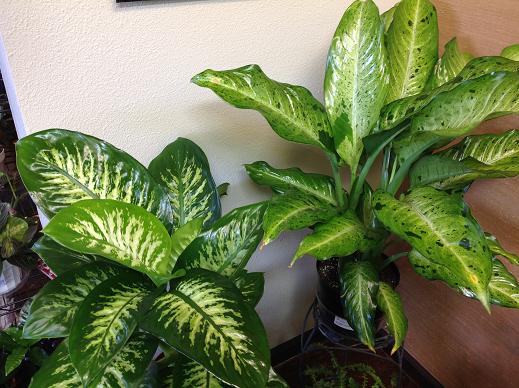
What they need is water, but not in the soil, on the leaves. When plants get hot they perspire, just like us, they draw moisture from the roots to wet the leaves. Plants create humidity, which is why when I open my shop in the morning in the summer time after being closed up all night, it literally feels like a rainforest in there. Too much humidity can create mold issues, which is why I have fans running around the clock in my shop, to help manage the humidity levels.
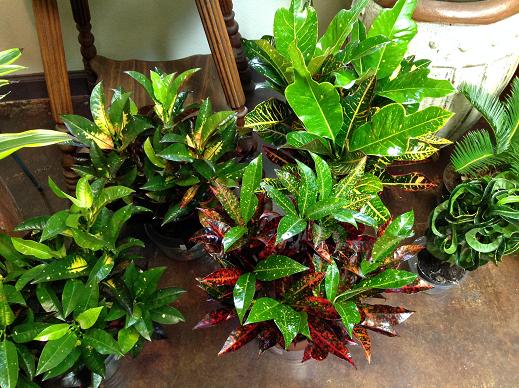
As a general rule, once my air conditioner goes on, I start supplementing humidity for my plants.
It is important never to put a plant in the pathway of an air conditioner vent for two reasons. The first reason is that it blasts them with cold air, and they really don’t respond well to that. The second reason is that it makes it virtually impossible for them not to dry out on their leaves.
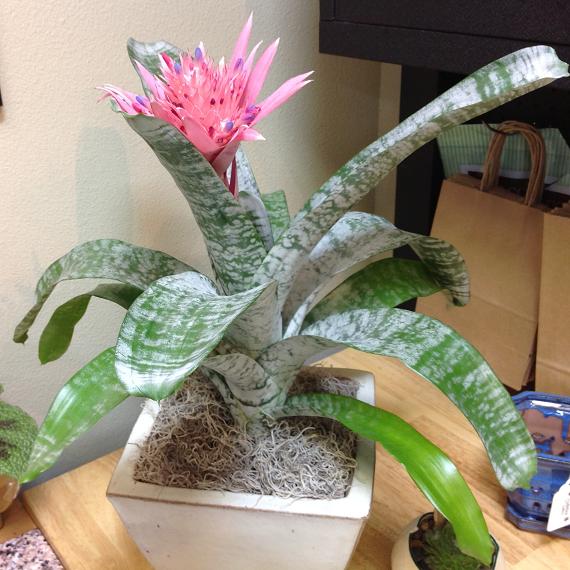
You can get as detailed as you want about raising the humidity levels in your home, but here are a few easy tips that I use that seem to work very well.
Misting: Using a spray bottle to spray your plants is a great way to ward off the ugly effects of dry air. I usually do it in the morning while I am going about my morning routine. This is good, even for plants that don’t show signs that they need spray and you will notice the difference in their appearance when you do this regularly.
Another thing I do sometimes when my plants need water as well as misting, is to put all my plants in the shower and give them a good soak…two birds…one stone:)
This also helps clean the leaves, which helps them breath better. Letting your leaves get dirty and coated with dust makes them struggle. You can get plant mitts that work really well as leaf dusters. You get them wet, wring them out and then you are both cleaning and moisturizing the leaves.
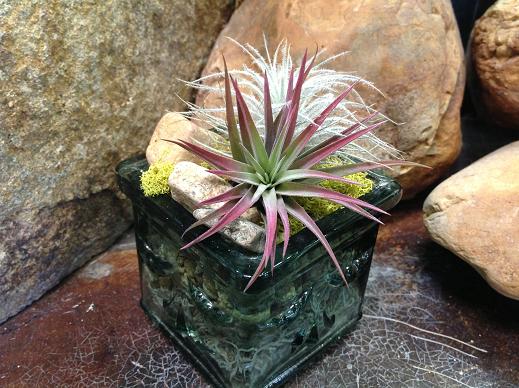
Grouping: Putting your plants close together helps them increase their humidity levels as well, but often times in our hot summers, it still isn’t sufficient for many of our more tender plant varieties.
I recommend misting, as it is my favorite method.
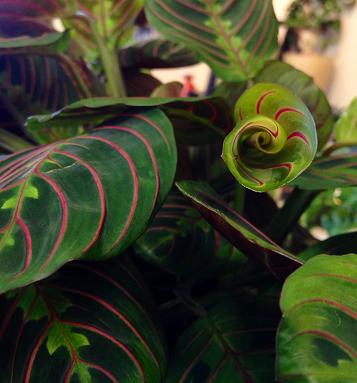
If you have a plant that is suffering from low humidity it is important to trim off the crispy bits. It you are dealing with dry tips and not the entire leaf, simply cut off the part that is dry, no need to take the whole leaf. Sometimes they do need to be seriously cut back if they have gotten very dry, but in the end your plant will thank you for it by growing nice new leaves so long as you keep up the misting until we get into cooler temperatures and start to have rain.
So bringing this back around to where we first started, I enjoy having a variety of ferns, and I rarely have trouble with them. There are some varieties I have found to do much better than others in our climate and I’d be happy to share them with you if you want to learn more. The truth is that any fern can do well here and so can all the other tender varieties, they just need a bit more attention in the summer time.
I’m here to help if anyone has any questions:)
Till next time…..when I will talk about plants and lighting.
Amy Duke is the owner of Solstice Gallery located at 40282 Highway 41, Suite 3, in Oakhurst. Visit on Facebook or stop in at the Gallery for more advice and ideas.

